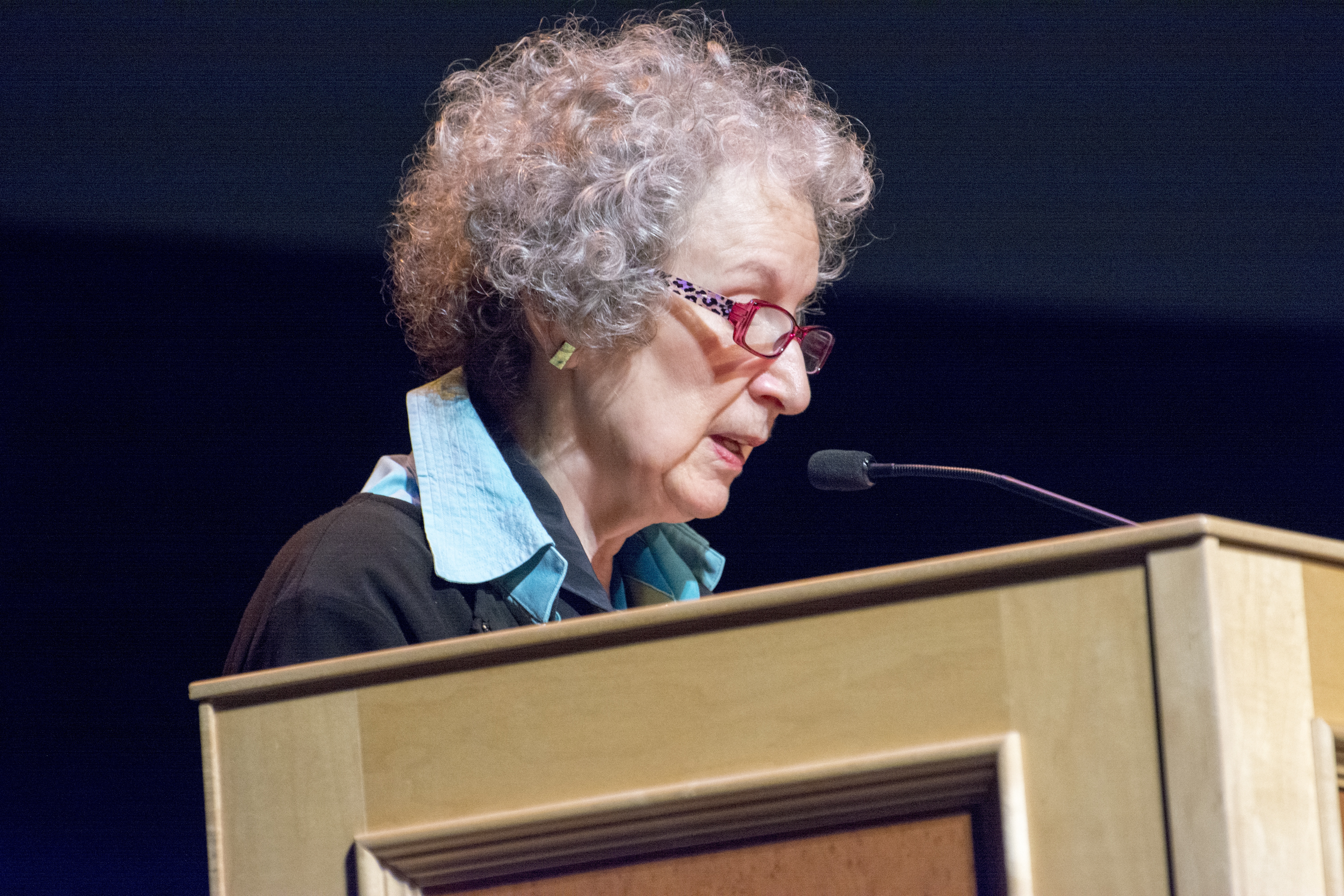Any follower of Margaret Atwood could most certainly describe her as a person familiar with the creative process and as a person who plays a large role in society as an artist.
Atwood recently presented some of her thoughts on these topics during the Red Deer College Perspectives Series held this week.
Her first presentation left attendees with a few ideas to think about surrounding the creative process, and the second brought attendees’ attention to the many roles of artists in society and to some of the ways those roles have evolved.
“The trouble with novels is that there just isn’t one craft that must be learned. There are many and they are learned by doing (creating a novel) and they are learned every single time,” Atwood said.
She told the audience that structure is the main thing that blocks progress in a novel – how to tell what, and in what order does the author share the information? She reminded the audience the creator is only a small piece of a creation, and that a large role comes from those who receive and interpret what’s been created.
“Putting various tools together – tools including words, grammar, images and numbers – to achieve a desired goal is, I take it, the creative process, broadly interpreted,” she said.
“A lot of our creative processes are devoted to coming up with better solutions in (consensus, nourishment, procreation, recreation and defence) than the ones we have at present.”
Atwood said there are a few hints to help a person throughout their creative process, the first being to immerse yourself in whatever you are working with, be it words, paint, numbers or three dimensional objects. She said it is important to completely dive into a project so that one provides the brain something to work on.
Next, as many have before her, she said to go for a walk may be one of the greatest ways to move through a problem. It distracts the creative part of the brain, she said, and therefore allows the logical brain to work at the problem from a new angle.
Third, she said to interrogate your work as if you’ve never seen it before.
“Ask not, ‘Does it express my feeling?’ Ask instead, ‘Does it evoke the feeling I want to express in the reader or listener?’” she proposed.
“The creator is always just one entity in the act of creation. The created thing is passed on, if we’re lucky, from hand to hand, or from mind to mind. Along with the individual item that is passed goes the knowledge of how to make, and the desire to emulate. That is what we call ‘inspiration’ or ‘influence’.”
The final seed to creation, Atwood said, was essentially the positive faith of a can-do attitude. She said without the affirmation that one can complete a project, they can’t.
Atwood’s second presentation, a student session, focused on the artist’s role in society, and the various proposed roles that artists are subject to be in. She mentioned that the development of empathy is one such goal that artists contribute to because narration provokes inspection and thought.
She said human beings come with the ability to create and with an affinity for certain activities. She said what we can do with these abilities depends on the culture people are surrounded by.
“Every creator in every human endeavour ever stands on the shoulders of a huge pyramid of ancestors who have created before them and who have passed enough along so that subsequent generations can add, innovate, expand and occasionally take astonishing leaps into something truly new, or almost new, or new enough to astound. First, we dream it, then, we do it. Hint – this is not always a good thing,” she said.
She said creative endeavours and development depend on the technology available. She said that they also depend on an audience to receive the information or art, and to hopefully pass it along.
“Another observable fact about human creativity is that it comes in waves. It comes with a plateau, and a sharp peak, and a plateau. In the arts, you can usually correlate these waves with the advent of a new medium that invites exploration,” she said on the relationship between technologies and art development.
Atwood also touched on the artist’s role as a reflection of current society. Through the Renaissance, art began to become more introspective and personal. Portraits were common because people were exploring the self. Such is the same when religion or politics heavily influence a society, rather than a human movement.
Also, Atwood addressed the role of art as a therapy and guide in societies. She talked about studies being done to help post-traumatic stress disorder war veterans work through their pain through drama and material art. She said this indeed has been a role as artists – to help people grow and learn and heal.
Finally, Atwood spoke about the place of censorship within art. She said that apps such as ‘Clean Reader’, that alter and change prose if words are deemed ‘unfit’ alters the purpose of that art or literature, and is therefore unacceptable.
In an interview, Atwood reflected on the role of social media as both a propeller and a silencer in art, depending on who shares the information and the medium they choose to share it on. This is another kind of ‘energy’ that she talked about in her speech – energy that a society uses to pass information and material.
“My question today is does anything go? Should anything go? Should there be limits? Should artists be told by anyone what to do?” she asked.
kmendonsa@reddeerexpress.com



